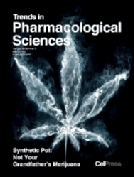
“The objective of this paper is to review the available literature regarding the use of cannabis and cannabinoids in adult oncologic pain management.
RESULTS:
The final number of articles included is nine articles. Of the nine studies reviewed, eight reviewed the effect of the cannabinoid THC on cancer pain, and one study reviewed the use of medicinally available whole plant cannabis. The following study types were included: multiple multi-center, randomized, placebo- controlled trials and two prospective observational survey studies.
RESULTS AND CONCLUSIONS:
Of the eight studies that reviewed the effect of the cannabinoid THC, five found THC to be more effective than placebo, one found THC to be more effective than placebo in American patients but ineffective in patients from other countries, and two found THC to be no more effective than placebo. The study that reviewed the effect of the whole plant cannabis found that there was a significant decrease in pain among those patients smoking cannabis.”
https://www.ncbi.nlm.nih.gov/pubmed/30527857
https://www.painmanagementnursing.org/article/S1524-9042(18)30209-1/fulltext




 “Changes in lipid metabolism are intimately related to cancer. Several classes of bioactive lipids play roles in the regulation of signaling pathways involved in neoplastic transformation and tumor growth and progression.
“Changes in lipid metabolism are intimately related to cancer. Several classes of bioactive lipids play roles in the regulation of signaling pathways involved in neoplastic transformation and tumor growth and progression.



